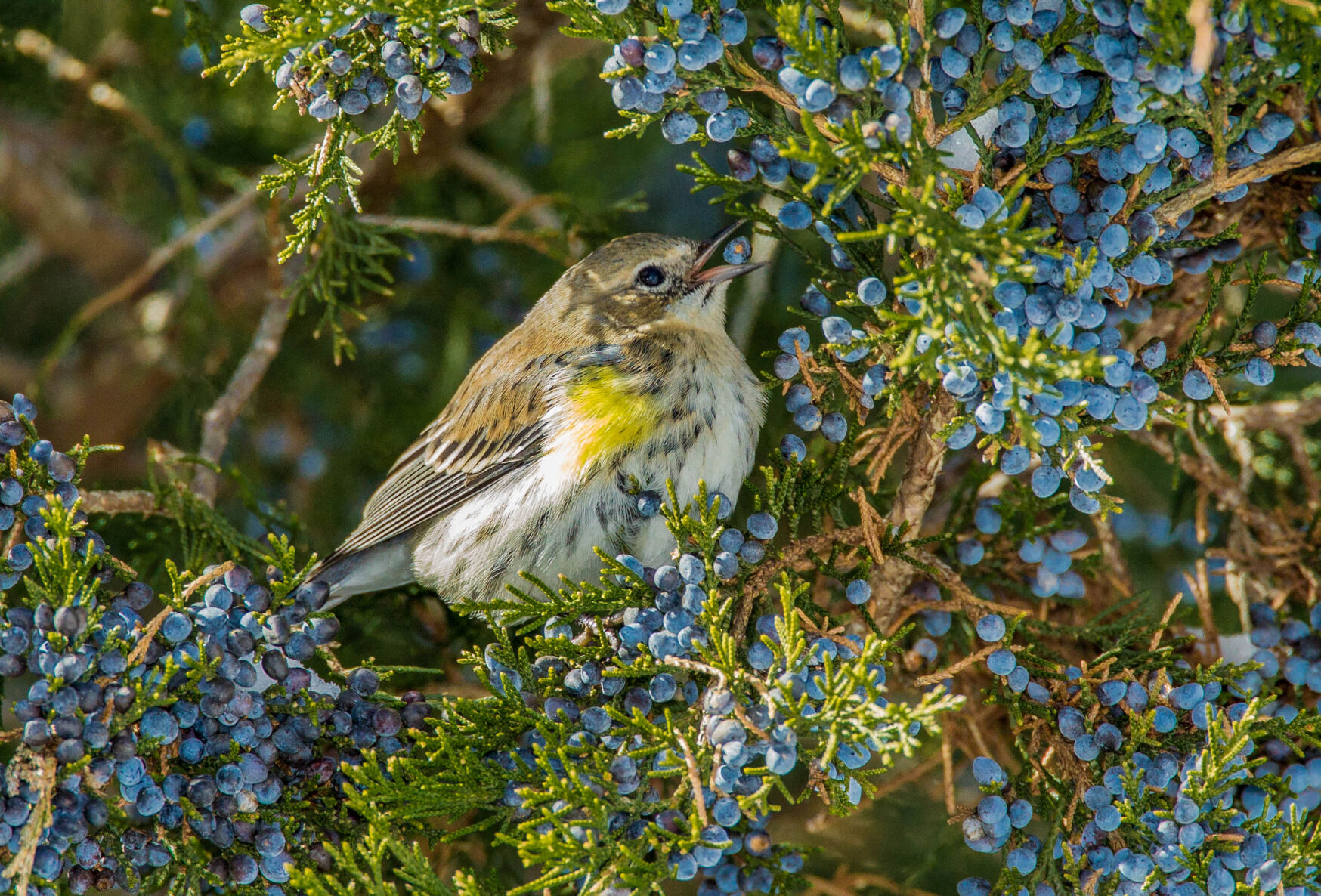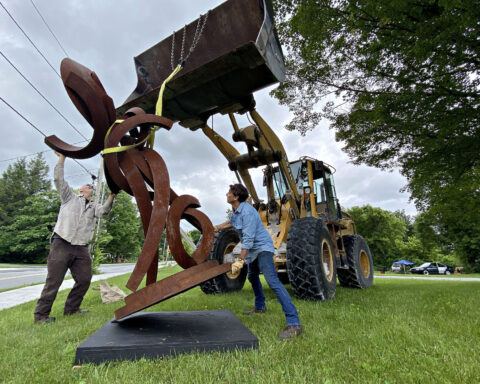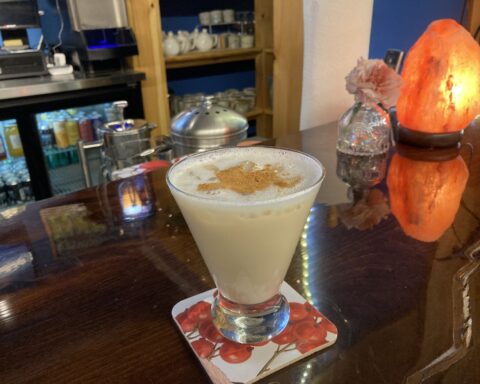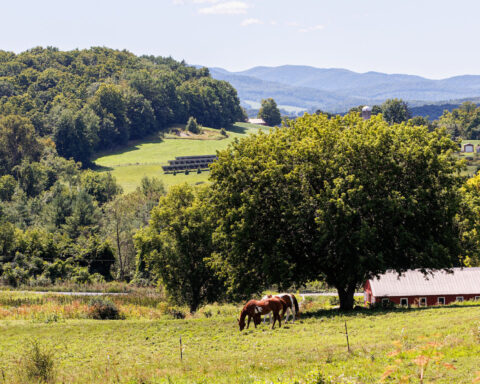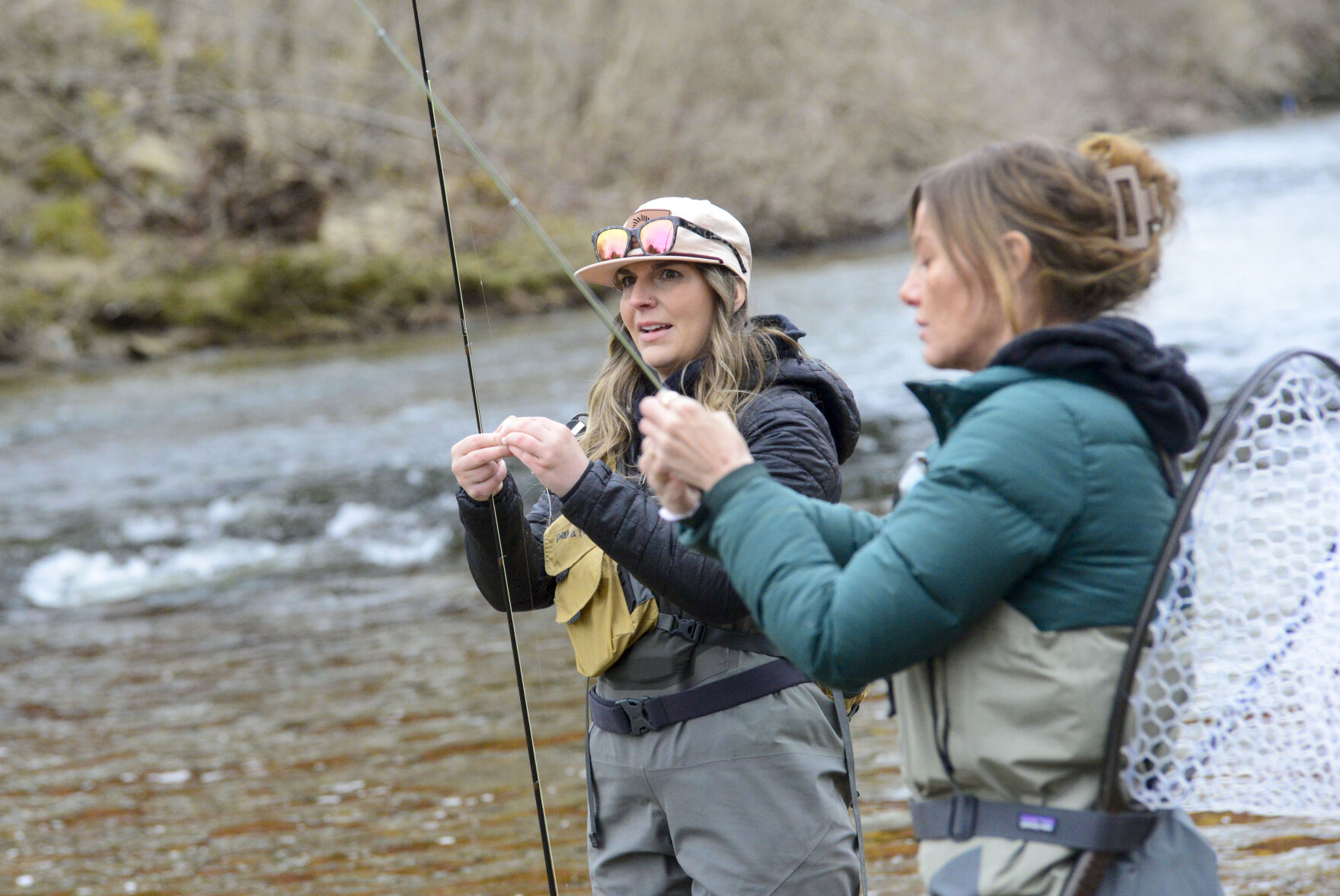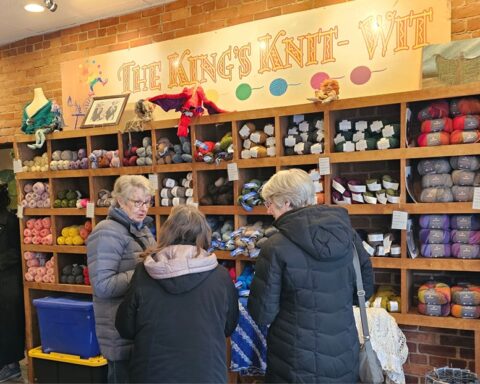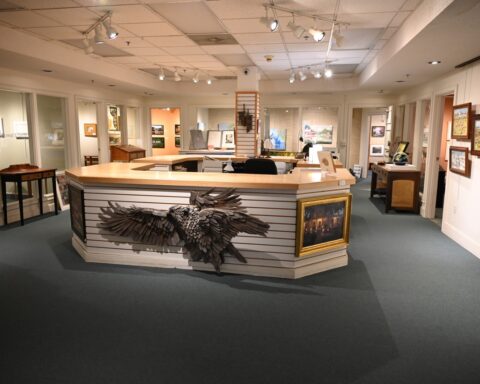By Victor C. Capelli.
By ones or by twos, in groups or in flocks, migratory songbirds journey north into Vermont and the other New England states.
Starting with the winter thaw of March, they ride the coattails of blustery winds and traverse up along the Atlantic Coast. Navigating by genetic design, they negotiate countless lakes, streams and river valleys over distances of thousands of miles to make their way along the Appalachian Mountains, the Catskills and Adirondacks of New York, toward the twin axes of the Green and Taconic mountains of Vermont, and the White Mountains of New Hampshire and Maine.
The forests, fields and valleys of the Green Mountain State of Vermont, home to over 388 species of birds, is perhaps the most bird diverse state in New England, with 38 species of nesting warblers recorded. The state begins to fill up with these avian dynamos of color, sound and activity. They form a veritable feathered kaleidoscope of color swirling about in the unfolding tree top buds of oaks, maples, ash and birch, which animate and infuse the air of Vermont in a swirling storm of returning life, in the welcome arms of leafy branches and boughs.
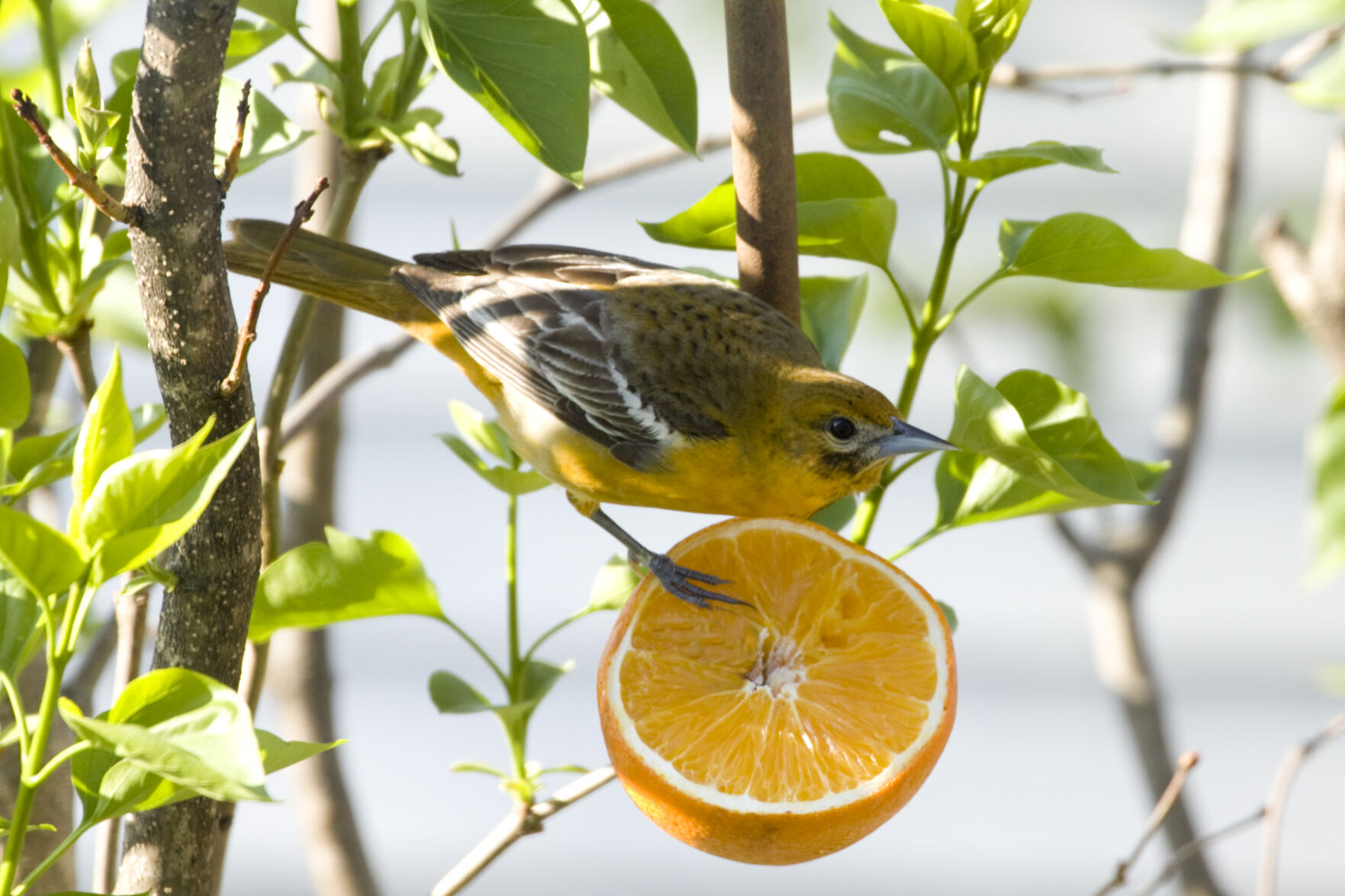
It begins every spring, in the deep recesses of the Central and South American tropical rainforests, the Caribbean Islands, the Gulf Coast States and southern Florida, with the annual northward migration of millions of neo-tropical songbirds along and across the Gulf of Mexico. They sojourn into their nesting grounds in the deciduous and evergreen forests and fields of the Northeast and Canada on the great Atlantic Flyway, which with the other migratory bird flyways (Central, West Coast, Rocky Mountain and Mississippi) crosses the continent in great waves of bird exultation.
By early April, many have reached their destination in New England and begin looking for nesting sites in the first greening forests and fields. By early May, the great springtime flood of the returning migrants has truly arrived. The Wood Warbler tribe (tiny brightly colored neo-tropical migrants) along with vireos, flycatchers, tanagers, kinglets, hummingbirds, grassland birds like meadowlarks and bobolinks, thrushes, shorebirds, waterfowl, raptors, orioles, blackbirds and other species are busily setting up breeding territory and begin nesting in Vermont’s greening land.
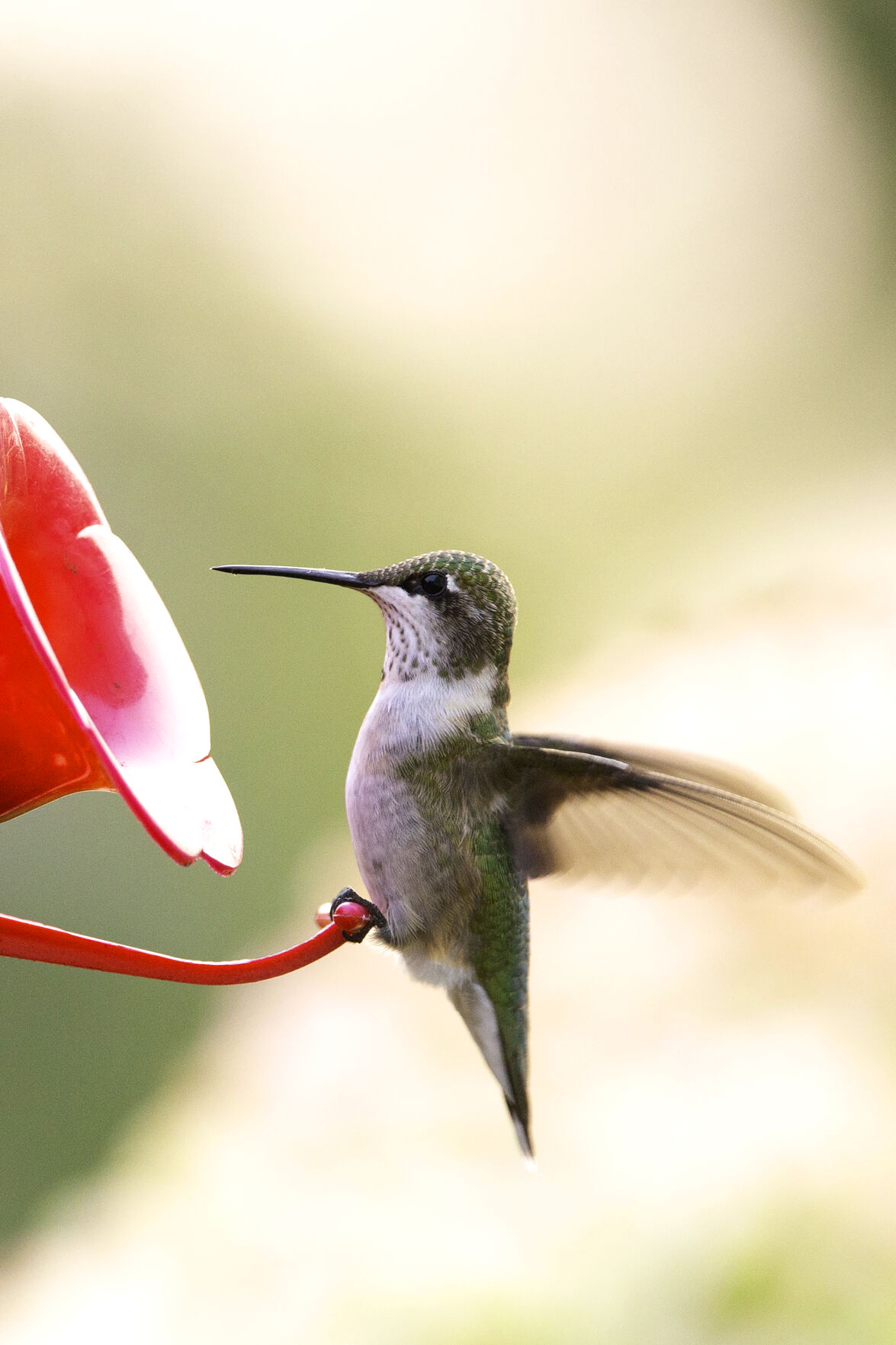
A colorful cornucopia of songbird opulence, the neo-tropical Parulidae or Wood Warblers include some 49 species including the Cape May Warbler, the Ovenbird, the Northern Parula, Yellow Warbler, the Black-Throated Blue and the American Redstart. The Redstart in particular is a vibrant little warbler also known as the Mariposa or “butterfly” in Spanish for its quick-flitting, butterfly-like movements and “Candelita” or Little Torch in the male because of his flaming red and black tail feathers and wings. Many others, like the Common Yellow Throat, Black and White Warbler, Blackpoll and the Blackburnian or the “firethroat,” (named for the male’s blazing orange chest) flock into the luxuriant Vermont highlands like a breath of warm spring air melting away our long interminable winter. All the warblers are sexually dimorphic, meaning it is only the male sporting bright breeding plumage, while the female is donned in more drab, muted colors that helps to hide her from predators while she is nesting.
A common neo-tropical warbler nesting in Vermont, the black and white striped Blackpoll has a strenuous overnight trans-oceanic flight from Venezuela’s rainforests across the 500-mile-wide Gulf of Mexico to the Louisiana and Texas coasts, defying the seemingly overwhelming odds of powerful storms, predators, reflective windows and increasing boreal forest loss. Flying at night to avoid predators and to take advantage of calm weather, the Blackpoll is accompanied by his fellow northbound migrating warblers, vireos, thrushes, flycatchers and hundreds of other songbird species who must hurry in order to find suitable nesting sites. They breed and fly south again to their tropical overwintering grounds at the end of the brief New England summer. Based on bird banding evidence, the Blackpoll is a long-distance avian traveler making a round trip between South America and New England of over 12,400 miles.
The Blackpoll Warbler, by the way, like many birds migrating across the American Continent (and around the world) is in trouble. According to the USGS breeding bird survey estimates, the Blackpoll Warbler population is declining 2 to 4 percent a year due to deforestation, logging and habitat loss. The thin, insect-like song (“si-si-si”) of the Blackpoll is his territorial signature “heat song” of high summer, which proclaims his hidden presence in Vermont’s southern Green Mountains. It is barely heard in the thick, obscuring boreal forests of balsam, hemlock and spruce branches, hanging high overhead.
Try to walk outside your house at night sometime in early May or June and you can hear the bird migrants high overhead, cheeping, twittering and calling to each other as they wing their way bravely through the chilly north winds before landing at dawn and feeding on insects amidst the unfurling leaves and flowers exploding in the spring finery of our beautiful New England state.
Through the riotous opening blooms of Vermont, the tired, famished flocks of warblers, vireos, flycatchers, kinglets, thrushes and the rest of the neo-tropical migrants descend upon the swarming insects attracted to the drooping catkins and opening leaves of the willows, alders, birches and oaks. Oaks, especially, as they are rightly called, are “the supermarket of the woods” because oaks supply acorn mast to dozens of wildlife species living in the Vermont forest and the flowering catkins that attract insects to them.
Darting, flitting, dancing, dangling and hopping about the unfurling uncurling green foliage, these warblers and other neo-tropicals act almost frenzied and single-minded with their ravenous appetite for the abundant insects flying about them.
They are also completely oblivious to our presence and our almost futile attempts to identify them all as we crane our eyes skyward through the leafy weave of branches, scanning with binoculars where they try to eat as much food as they can before launching upward and onward again into the gathering springtime dusk, food-fueled in their continuous, perilous, northward flight through the cold, dark New England night.
Then, if we are ever so lucky to experience it, comes that truly spectacular apex of Passeriformes exuberance in the springtime songbird migration — the once-in-a-lifetime viewing of the whirling tempest of neo-tropical wings resulting from the combination of both powerful blocking storms and local geographical bottlenecks known as the Warbler wave.
Trapped and pinned down by the overwhelming north winds onto protruding headlands on water, on mountaintop ridges or in deep forest enclaves with abundant insect food, these little migrating birds begin to accumulate in vast numbers on nearby bushes, trees and even on the ground, unable to fly further because of the strong prevailing winds.
Sheltering together by the hundreds and even many thousands, they huddle underneath protective branches or fly about in the trees in a desperate, hungry, feeding flock mob, searching for insect food or berries while they wait for the weather to break.
A Warbler wave can transform a part of the Vermont woods into an outdoor aviary with hundreds of neo-tropical bird species compressed into an area of only an acre or less. Eventually, the weather eases and the birds move on to calmer mountain woodlands of the state, leaving the stunned and astonished birder with an augmented life list of hundreds more bird species tallied.
The nocturnal migrants can be viewed at night, too. If you have a telescope, you can train it on the brilliant face of the full moon and watch their nocturnal passage in a dramatic illustration of bird migration across the moon’s ancient landscape of pitted craters and maria (seas) looking down on us from the cold night skies.
Among the wooded dells and dark moss-covered logs and fern-thick dripping wetlands and forested crannies in the Vermont mountain woodlands of spring, one can also hear the ethereal rising lyrical songs of the Wood Thrush and the Hermit Thrush. The Hermit Thrush, the State bird of Vermont since 1941, is called “The Nightingale of the Woods” because it has one of the most beautiful songs of all the birds in North America. The Hermit Thrush song starts with a long introductory phrase and ends with varying tonal pitches. It is the only neo-tropical thrush species that overwinters in the southern United States.
Both thrush species, cousins of the Robin, sing their elusive and falling pan pipe melodies in the deep woods like echoing poems of eternal delight. Their delicate musical notes are bright, ecstatic statements of peace and tranquility, twirling up or spiraling down or just fading slowly away like woodland sighs beneath and between the evergreen treetops, lightly touched by the first ephemeral golden rays of the dawning sunrise in the eastern skies.
This is Vermont, brought to vivid life by the return of the songbird migrants reborn in the Vermont mountain spring awakening all around us.
Victor C. Capelli is a retired environmental educator, environmental analyst and nature illustrator.
